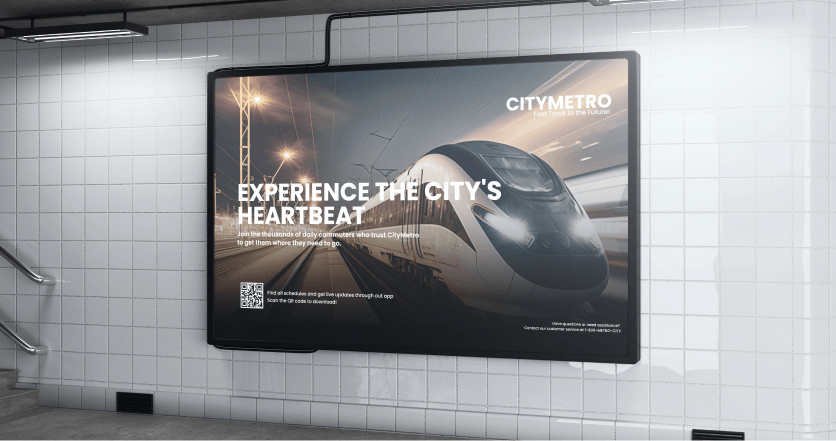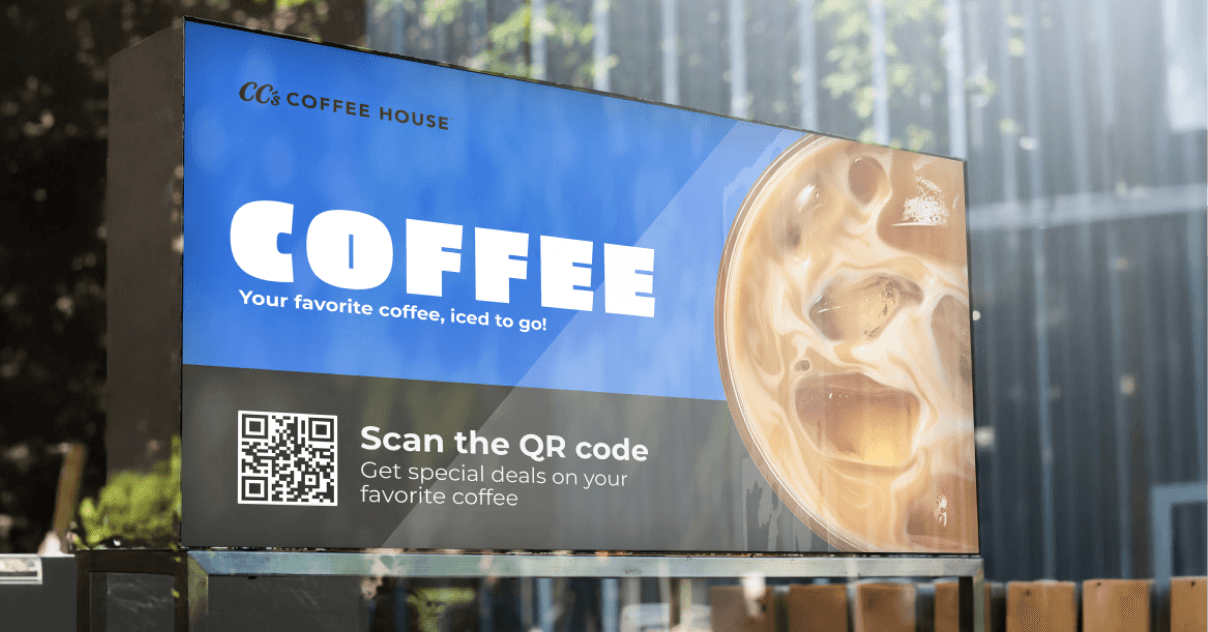When using digital signage, it’s about what you show and, very importantly, when you show it.
That might sound obvious, but it’s often overlooked. Good timing can turn a screen from something people ignore into something that actually drives results, like more sales, more foot traffic, or more attention to the thing you want people to notice.
Scheduling your content doesn’t need to be complicated. And if you get it right, it can help your business earn more, without doing anything flashy or extra.
Take it a step further with these 7 effective content scheduling strategies.
So, what exactly is content scheduling?
It’s pretty straightforward. Content scheduling is just planning what content shows up on your screens and when.
Let’s say you own a coffee shop. You could show breakfast deals in the morning, lunch specials around noon, and happy hour promos in the late afternoon. With scheduling, all of that happens automatically.
It’s the same idea if you run a restaurant, a store, or any place where different people come in throughout the day. The message on the screen can shift depending on who’s there and what might attract their attention the best.
That’s the whole point: Relevant content, shown at the right time. It’s a small change that can make a big difference.
Why does timing matter so much?
Because when content is timed right, people are more likely to act on it.
- A hungry customer sees a lunch deal just before noon? That might be all it takes.
- A shopper sees a “weekend-only” discount while browsing on a Saturday? Perfect timing.
It’s about showing people what they need when they need it and not just playing the same loop all day and hoping it sticks.
Smart ways to use content scheduling to boost revenue
When you schedule your content with purpose, you’re making your signage work harder for you. It’s one of the easiest ways to make sure your screens are showing the right message at the right moment, which can lead directly to more sales, better engagement, and stronger results overall.
Here are a few practical ways to use scheduling in a way that actually helps your business bring in more:
1. Time-based promos
Match your offers with times that make sense. Breakfast in the morning, clearance items in the evening, that kind of thing.
2. Adjust content based on your audience
If your foot traffic changes throughout the day—office workers early, families later—schedule your content to speak to those different groups.
3. Location-specific content
If you have more than one screen or location, each one can have its own schedule. Your downtown store may need a different message than your suburban one.
4. Plan for holidays and events
You can schedule content in advance for seasonal offers, holidays, or big local events. No last-minute stress.
5. Sell ad space
If you get a lot of traffic, you can even schedule third-party content, like ads from partners or vendors, at specific times of day. It’s a simple way to open an extra revenue stream.
How Yodeck can help you do all of this
Scheduling might sound like something that takes time to understand, but Yodeck makes it really simple and surprisingly flexible.
You can choose exactly when to show layouts, playlists, or media with just a few clicks. Everything is done visually through a calendar view, so it feels more like dragging blocks on a schedule than setting up anything complex.
Here’s what you can do with it:
- Add content easily: Pick a layout, media, or playlist and drop it right into your schedule.
- Use the calendar view: Switch between day, week, or month mode to plan your schedule exactly how you want.
- Set timeframes: Choose when content starts and ends, down to the minute. You can also set repeat rules (daily, weekly, monthly, custom—you name it).
- Work by time zone: Schedules follow the time zone of each screen, so content always plays at the right local time.
- Create recurring events: Want something to show every Monday? Every day for a month? You can do that without having to reschedule it manually.
- Turn screens off automatically: Need your screen off overnight or during breaks? You can schedule that too with the “Turned Off” event.
- Handle overlaps with priority: If there’s a gap in your schedule, Yodeck falls back to your default content. But scheduled events always take priority.
Everything lives in one place, and you can edit, duplicate, or move schedules around whenever you need. Even better, if you manage multiple screens or locations, each one can have its own schedule, or you can group them together and save time.
Bottom line: It’s flexible enough for complex needs but easy enough for anyone to set up.
How to know if it’s working
The nice part about scheduling is you can track how it’s performing, like:
- Whether sales go up during scheduled promos
- Which content gets more attention or engagement
- What times of day actually bring in the most action
From there, it’s just a matter of adjusting and improving. You don’t need to guess; your results will guide you.

Final thoughts
Content scheduling is more than a technical feature; it’s one of the easiest ways to help you stay consistent and relevant with what you show. And the best part? Once you set it up, it keeps working for you without constant check-ins or manual updates.
It gives you space to think ahead, to plan based on what your business actually needs instead of reacting in the moment. Whether you’re running time-sensitive promotions, trying to reach different types of customers throughout the day, or just want your screens to feel a little more thoughtful, scheduling makes that possible.
And with a tool like Yodeck, you don’t need to overthink it. You just build your content strategy once, and let your signage do the rest.
